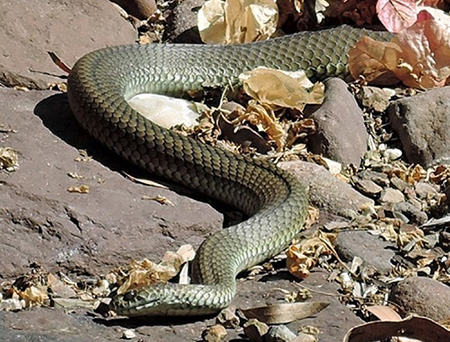Reptiles
Reptiles:
Reptiles are among the last zoo animals to benefit from the trends giving animals free 24/7 access large, complex areas and opportunities to rotate through lengthy and opportunity rich “trails”. When we ask: “What do we do for the animals that they could do better for themselves” we rarely think of reptiles and amphibians. Perhaps it is time we did. Snakes living in the wild maintain physical and behavioural fitness moving from place to place meeting their own needs. Why cannot zoo reptiles in zoos have similar opportunities?

Jon photographed this green tree viper while hiking in Kai Yai National Park in Thailand.
Reptiles and amphibians are among the most interesting and popular zoo exhibits, yet in my experience they are among the most locked into the old proprietary collection mentality and farthest behind in animal welfare. It was a zoo reptile curator who first taught me to provide a super abundance of critical resources. “If you have four iguanas and only one basking light you soon will have only one iguana!” The need for precision in providing ideal ambient conditions such as temperature, humidity, and light spectrum is best seen in reptile exhibits. Perhaps because of this emphasis on care by humans, reptiles and amphibians are entirely dependent on their carers and have no choices or control over their own lives. Reptile curators still pride themselves on the largest collections and must unique species. A noted reptile curator once assured me that “The public will expect to so no less than 150 species in a top reptile collection!” This was simply the statement of a reptile collector transposing his own values onto zoo visitors.
Testing done by Dale Marcelini at the Smithsonian National Zoological Park found that of the over one hundred species on exhibit the public only focused on a dozen or so. These were the most dangerous, largest, rarest, ugliest (to humans) and most familiar.
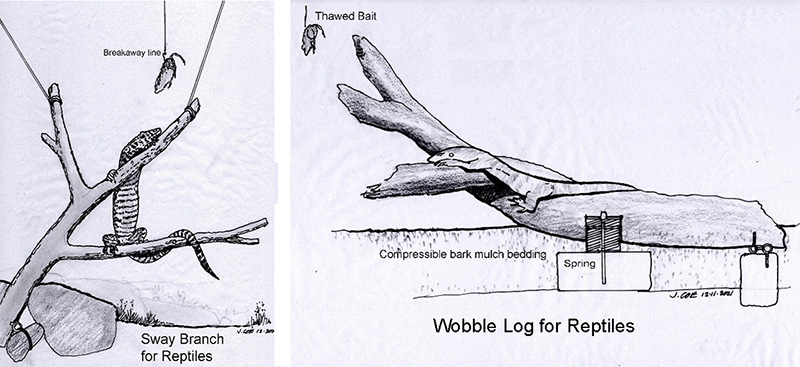
Jon’s sketches of features encouraging hunting reptiles to gain exercise and Improve balance.
Today we are concerned reptiles and amphibians have sufficient room, opportunity, and incentive to obtain proper amounts of exercise and mental stimulation, in line with wild members of their species. Ambush species like vipers and turtles need less exercise than hunting species such as cobras or monitors. Yet all need far more than most zoo exhibits provide, where large snakes cannot even stretch out, much less explore novel environments. Great progress is being made in many zoos on training reptiles and ideas such as animal rotation and trailways hopefully will soon be developed for many reptile species
Reptile Projects
Regenstein Small Mammal - Reptile House at Lincoln Park Zoo
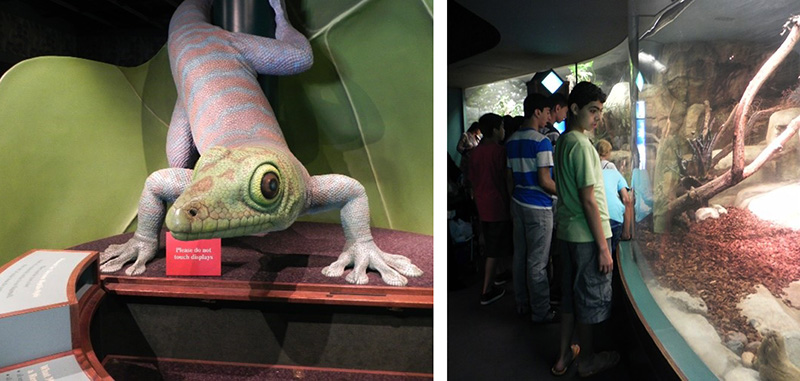
Jon helped design the large (~2100sqm – 23,000sf) Regenstein Small Mammal – Reptile House at Lincoln Park Zoo with CLRdesign (then operating as CLRR) in 2000-2002. Displays began as small, simple, and didactic, building to large and more complex. The interface between visitors and animals waved in and out, suggesting a more flexible interrelationship. Enclosures for larger reptiles were oversized compared to present practice.
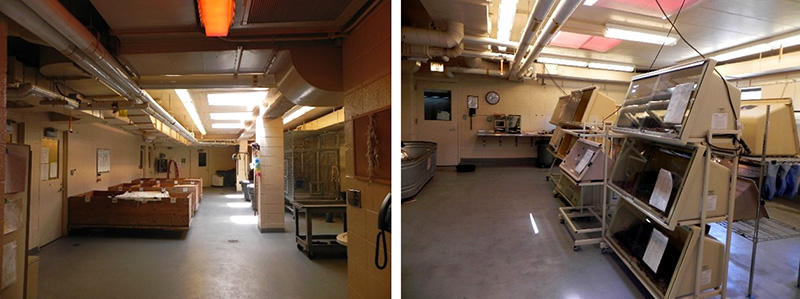
An important functional element of the plan was provision of spacious non-public animal breeding facilities (~185sqm – 2000sf). Thus, reptile species of public interest were on display and breeding of endangered species could be carried out in large quantities without spatial constraint.
- Regenstein Small Mammal Reptile House, Lincoln Park Zoo CLR
Aquarium - Reptile House Riverbanks Zoo
This innovative building contains reptile exhibits in a rainforest gallery as well as regional freshwater fishes and a small coral reef tank cleverly integrated in modest space with high impact. Jon and then partner Gary Lee (CLRdesign) collaborated with noted aquarium designers Bios (John Nightingale and James Peterson) in 1990 on this project. Thirty years later it remains one of the best small facilities of its type to be found anywhere.
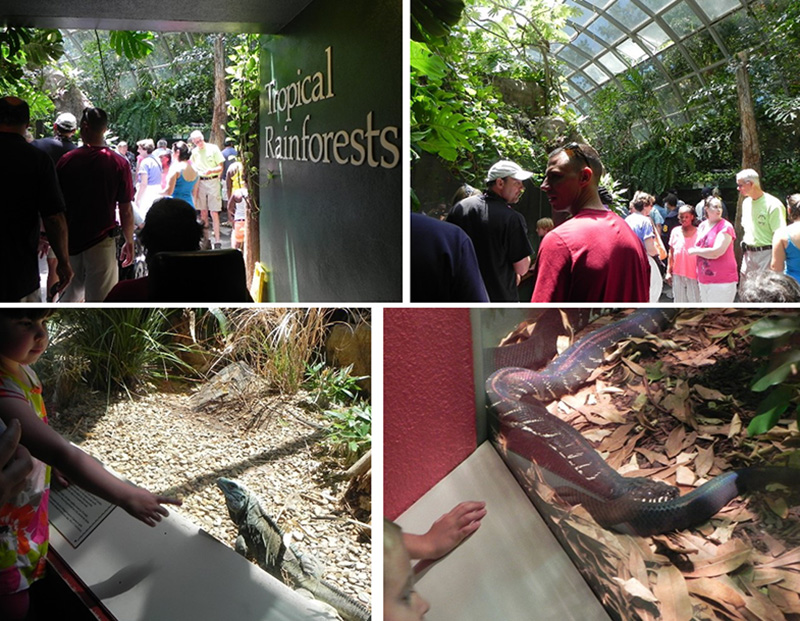
Examples of the spacious and wonderfully planted reptile dioramas.
- Aquarium Reptile Complex , Riverbanks Zoo CLR
Kyabram Reptile House
In March 2019 Jon completed the master plan for Kyabram Fauna Park in Central Victoria, Australia. Among the first new projects was a new 220sqm (2300sf) reptile house with a small construction budget. Working with Park Manager Lachlan Gordon, Jon developed multiple concept plans meeting the managers expectations, but not budget realities. After a series of reduced sizes, the final plan was accepted and is now under construction, designed for eventual expansion.
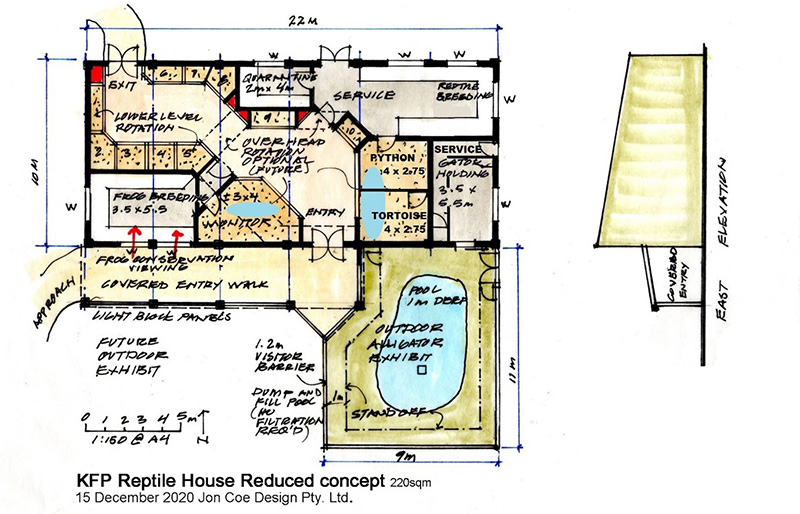
The Final Concept Plan.
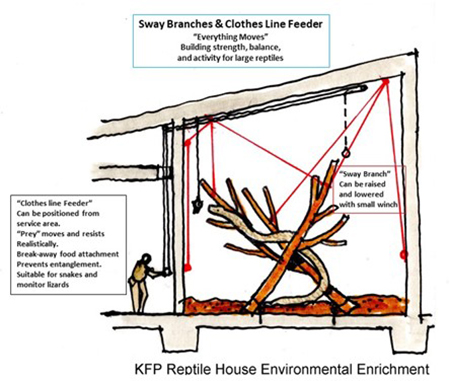
Although the floor space is small, the vertical space is ample for reptiles like large constrictors and monitor lizards able to climb on swinging supports to encourage development of strength and balance. Elevated feeding and climbing features can be lowered for servicing, so carers need not climb themselves.
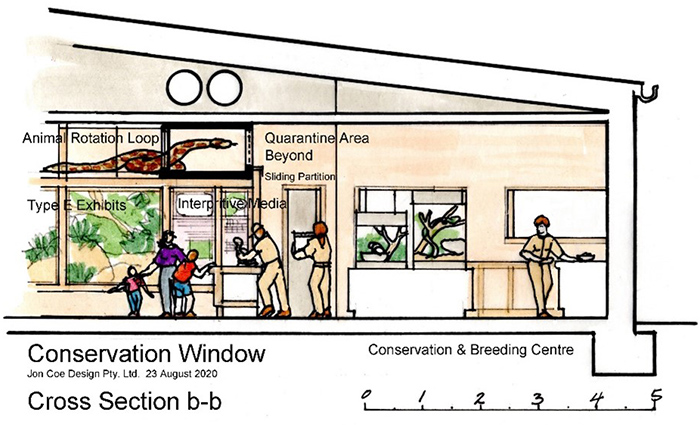
This conceptual cross section shows both public and service areas. Note the elevated linear glass fronted trail system allowing pythons, monitor lizards and other larger reptiles to loop through the building above visitors searching for food, exploring and exercising.
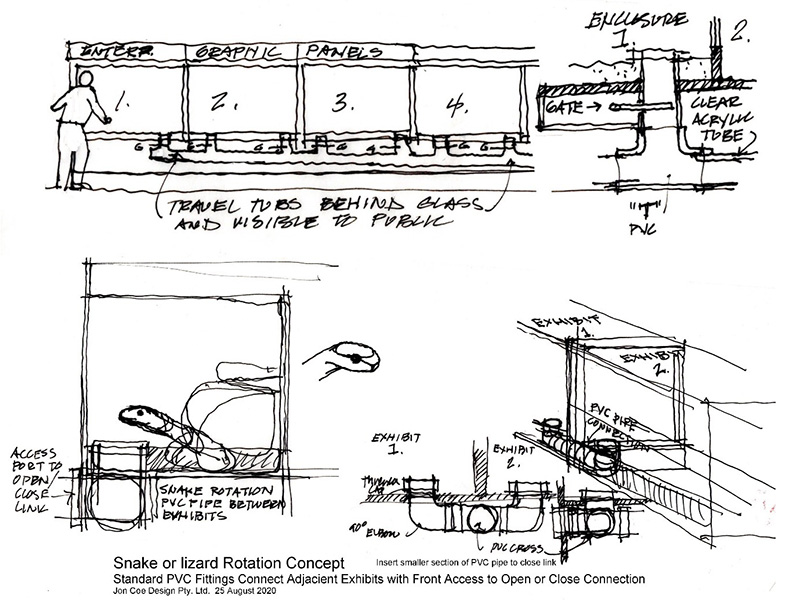
Here are my quick sketches exploring ways to provide access to reptiles to rotate through multiple display areas. While gaining popularity with mammals such as primates, this concept has yet to be used with reptile to my knowledge. (For more information see the section on animal rotation).
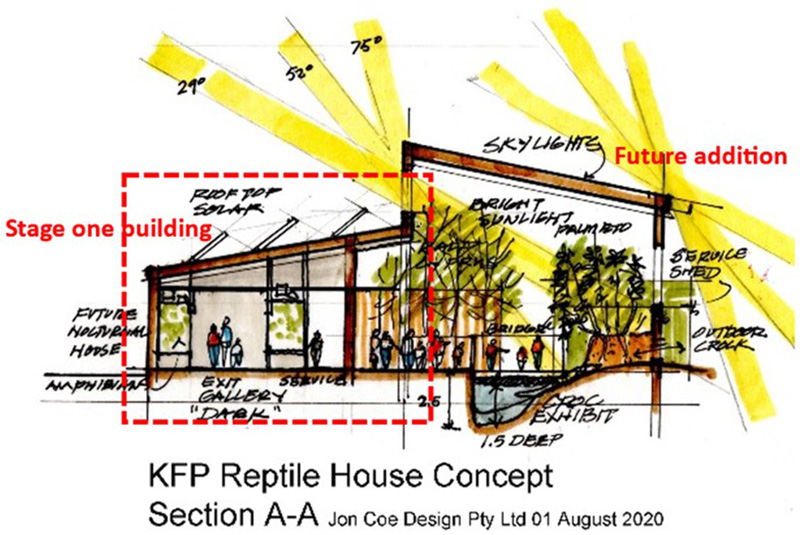
This conceptual building cross section demonstrates how the present small reptile house may be expanded in the future
- Reptile House, Kyabram Fauna Park, Victoria, Australia, 2019 JCD
